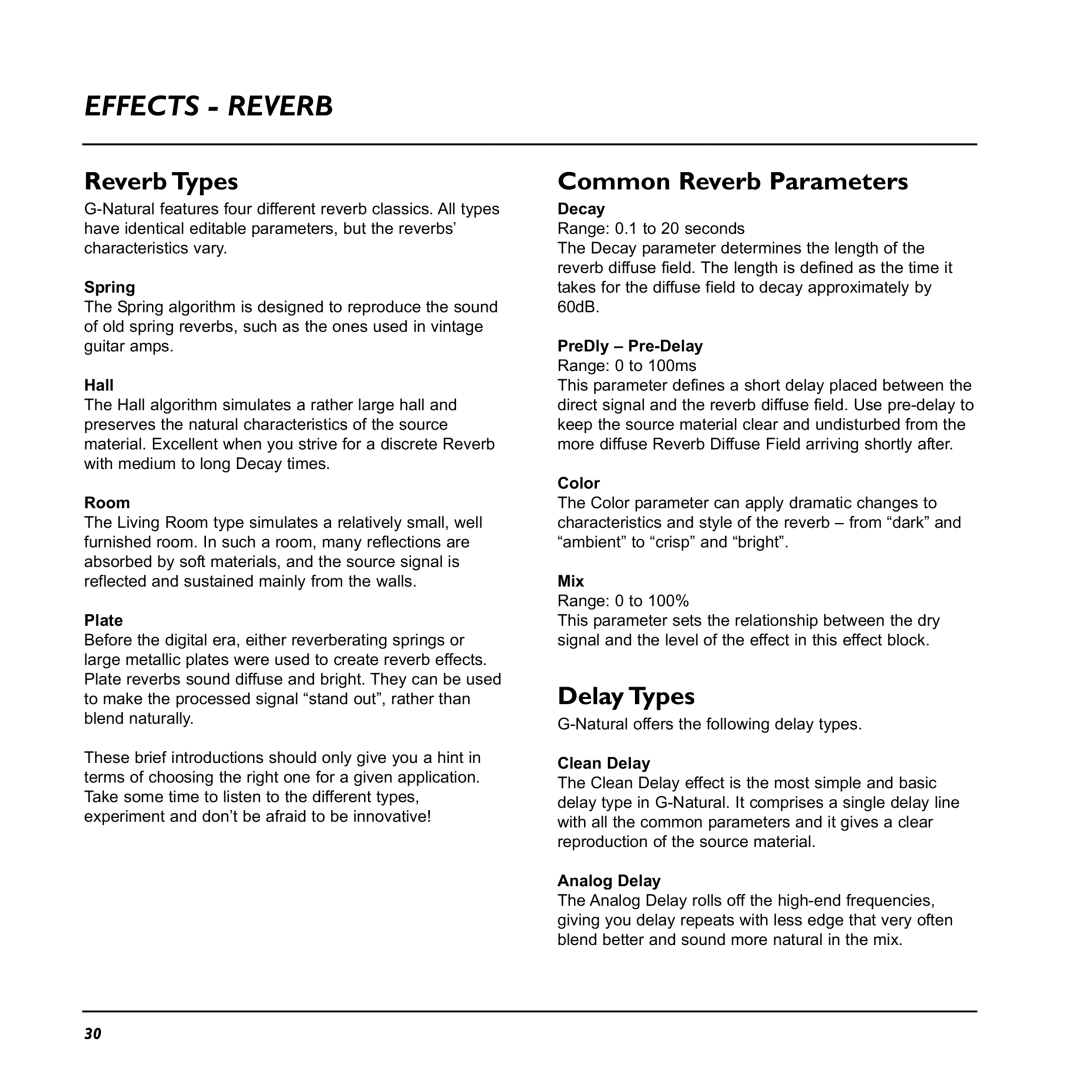
EFFECTS - REVERB
Reverb Types
Spring
The Spring algorithm is designed to reproduce the sound of old spring reverbs, such as the ones used in vintage guitar amps.
Hall
The Hall algorithm simulates a rather large hall and preserves the natural characteristics of the source material. Excellent when you strive for a discrete Reverb with medium to long Decay times.
Room
The Living Room type simulates a relatively small, well furnished room. In such a room, many reflections are absorbed by soft materials, and the source signal is reflected and sustained mainly from the walls.
Plate
Before the digital era, either reverberating springs or large metallic plates were used to create reverb effects. Plate reverbs sound diffuse and bright. They can be used to make the processed signal “stand out”, rather than blend naturally.
These brief introductions should only give you a hint in terms of choosing the right one for a given application. Take some time to listen to the different types, experiment and don’t be afraid to be innovative!
Common Reverb Parameters
Decay
Range: 0.1 to 20 seconds
The Decay parameter determines the length of the reverb diffuse field. The length is defined as the time it takes for the diffuse field to decay approximately by 60dB.
PreDly – Pre-Delay
Range: 0 to 100ms
This parameter defines a short delay placed between the direct signal and the reverb diffuse field. Use
Color
The Color parameter can apply dramatic changes to characteristics and style of the reverb – from “dark” and “ambient” to “crisp” and “bright”.
Mix
Range: 0 to 100%
This parameter sets the relationship between the dry signal and the level of the effect in this effect block.
Delay Types
Clean Delay
The Clean Delay effect is the most simple and basic delay type in
Analog Delay
The Analog Delay rolls off the
30
